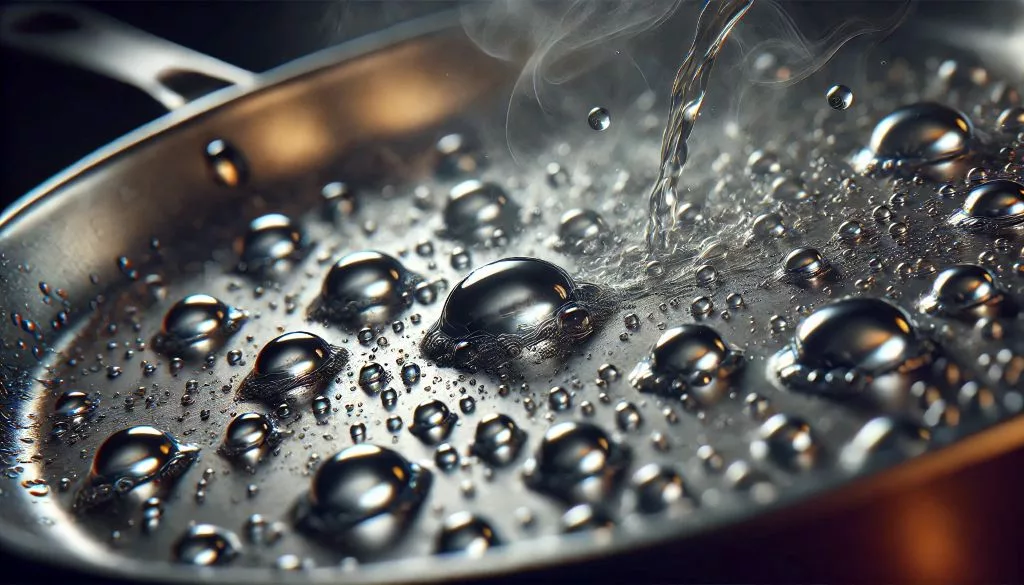Hey girlies! 🙋♀️ Are you like me, totally in love with the look of stainless steel pans but driven crazy by how everything sticks to them? 💣 Every time you try to fry an egg or some fish, it’s like a disaster! 😭 Don’t worry, I’m here today to share my exclusive tips that will guarantee your stainless steel pans will never stick again! 😎
My Stainless Steel Saga 💔
Let me start by telling you about my “love-hate” relationship with stainless steel pans. 😂 At first, I was captivated by their beauty and durability, thinking that cooking with them would be so fancy. ✨ But the reality? Every time I tried to fry something, it stuck terribly, not only ruining the look but also making it super hard to clean! 🤬 I even suspected I got a fake one and almost banished it to the back of the cupboard.
Then, I had to do something!😤 I could’t give up on my expensive pan. So, I started researching like crazy, watched tons of tutorials, tried countless methods, and finally! I found the legendary secrets to making stainless steel pans non-stick!🤩
The Ultimate Non-Stick Secret: Hot Pan, Cold Oil 🔥
That’s right! It’s that simple! “Hot pan, cold oil” are the four magic words, the ultimate code for non-stick stainless steel cooking! 🔑
BUT! There are still lots of little details you need to pay attention to, or it’ll still stick! 🧐 So, I’m going to walk you through, step-by-step, how to correctly use the “hot pan, cold oil” method!
1. Hot Pan 🔥
- Heat the Empty Pan: First, put the pan on the stove and turn the heat to medium-high. 🔥 Let the pan preheat thoroughly. This step is very important! Make sure the pan reaches a high enough temperature.
- Judging the Temperature: How do you know if the pan is hot enough? 🤔️ Here’s a little trick:
- Water Drop Test: Dip your finger in water 💧 and flick a few drops into the pan. If the water immediately evaporates with a “hissing” sound, it means the temperature is not high enough.
- If the water forms into small beads that roll around the pan like tiny pearls, it means the temperature is perfect! ✅
2. Cold Oil 🧊
- Pour in the Oil: Once the pan is hot, quickly pour in the right amount of cooking oil. Remember, the oil must be cold! 🥶
- Swirl the Pan: After pouring in the oil, gently swirl the pan to evenly coat the bottom.
3. Heat Control 🔥
- Turn Down the Heat: After pouring in the oil and swirling the pan, quickly turn the heat down to low! 🔥 This step is also crucial!
- Wait for the Oil Shimmer: Once the heat is low, wait patiently for a while, and you’ll see the oil start to shimmer, forming what’s called “oil shimmer” or “oil lines”.
- Add Your Ingredients: Once you see the oil shimmer, you can add your ingredients! 🥬🥩
Why Does Hot Pan, Cold Oil Prevent Sticking? 🤔️
You might be wondering, why does hot pan, cold oil work so well? There’s actually some science behind it:
- Leidenfrost Effect: When the pan is hot enough, the water droplets you flick in will rapidly vaporize at the bottom, forming a layer of steam that separates the water from the pan surface. This is why the water beads roll around.
- Oil Film Protection: When cold oil is poured into a hot pan, the oil temperature rises quickly. But because the pan bottom is very hot, the moisture on the surface of the food evaporates rapidly, forming a protective layer. At the same time, oil molecules quickly fill in the tiny pores on the food’s surface, creating a smooth oil film. This way, the food doesn’t directly touch the pan surface, and naturally, it won’t stick!
Heat Control is Key! 🔥
Besides hot pan, cold oil, heat control is also crucial for non-stick stainless steel cooking! Different ingredients need different heat levels.
- Frying Eggs: Low heat all the way! 🍳 Low heat ensures perfectly cooked sunny-side-up eggs with runny yolks.
- Frying Fish: Medium to low heat! 🐟 Start with medium heat to sear the fish skin until golden brown and crisp, then turn to low heat to cook the fish through. This way, the skin won’t break, and the flesh will be tender.
- Stir-Frying Vegetables: High heat, quick stir-fry! 🥬 High heat locks in the moisture and nutrients of vegetables, making them crispier.
My Non-Stick Tips ✨
In addition to the above, I’ve also summarized some extra non-stick tips to share with you:
- Prep Your Ingredients: Before adding food to the pan, try to dry the surface as much as possible. 💧
- Don’t Flip Too Often: Once the food is in the pan, don’t be too eager to flip it. Let one side cook and set before flipping.
- Choose Your Utensils Wisely: It’s best to use wooden or silicone spatulas to avoid scratching the pan surface.
- Cleaning and Maintenance: After each use, clean the pan thoroughly and dry it with a paper towel to keep the surface dry.
Final Word
Alright, girlies! I’ve shared all my secrets for non-stick stainless steel cooking with you! 🥰 Remember the four magic words “hot pan, cold oil” and master the heat control, and I’m sure you’ll be able to conquer your stainless steel pans and create even more delicious dishes! 😋
If you have any questions or any other non-stick tips, feel free to share them in the comments! 😘
